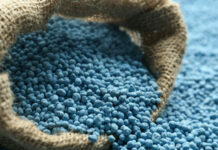
[miningmx.com] — ANGLO American’s production profile will change dramatically over the next two years as its four largest expansion projects are commissioned.
Three of these – the Kolomela iron-ore mine near Kathu in the Northern Cape, the Barro Alto nickel mine and smelter in Brazil, and the Los Broncos copper project in Chile will be in full production for the first time next year.
The fourth and largest project is the Minas-Rio iron-ore project in Brazil, which raised the ire of many Anglo investors two years ago.
Details of progress with this project were released last week, indicating that forebodings and criticism had been overdone. If Cynthia Carroll and her team succeed in getting Minas-Rio into operation by the second quarter of 2013, she will silence her critics by successfully completing one of the world’s largest mining projects.
Minas-Rio, however, comprises three projects. These include the construction of an enormous iron-ore mine in the mountainous central portion of Brazil in the mineral-rich province of Minas Gerais, a 525km slurry pipeline from the mine to the Acu port in the Rio de Janeiro province, as well as a harbour quay for exporting its 26.5m tonnes of iron ore a year.
More than 70% of the earthmoving work for the mine and enrichment plants has been completed. The rock-breaking plant is 65% complete, the sorting plant 85%, a reagent plant 78%, and the primary milling plant 56%. Structural and civil construction is 33% complete, said Minas-Rio project director Stephen Hall at a presentation to South African and British media representatives in Brasilia.
The biggest stumbling block was the servitudes that had to be obtained from 1,423 landowners for laying the pipeline from the mine to the new port.
According to Hall, contracts have been concluded with 1 308 (or 92%) of these landowners. A total 183km of the pipeline has been laid. Three of the four tunnels in mountainous areas have also been built and the fourth virtually completed.
This is the world’s longest slurry pipeline. It is considerably cheaper to build than a rail line, but the operating cost is the ultimate benefit.
It will cost around $2/tonne to pump the slurry from the mine to the port, dry it out and ship it, said Stephan Weber, chief executive of Anglo’s iron-ore unit in Brazil.
At the port, the 440m-long quay and a 3km access bridge to the quay have already been completed.
The Kolomela mine, which will be fully operational at the end of this year at a cost of $1.1bn, will add 9m tonnes of iron ore to Anglo’s production.
The Los Broncos copper mine in Chile was recently enlarged at a cost of $2.6bn. This will add another 230,000 tonnes to Anglo’s total copper production capacity of 623,000 tonnes a year.
Last year iron ore represented 37.5% of Anglo’s operating profit of $9.8bn, and copper 28.7%.
The growth in iron-ore and copper production, the sparkling future forecast for De Beers, and Anglos acquisition of the Oppenheimers’ stake in the diamond producer, indicate that Anglo’s earnings profile will change completely over the next two years.
Barro Alto, a new nickel mine and plant, will double Anglos nickel production to more than 70,000 tonnes a year. The plant cost $1.1bn.
– Sake24
– The writer holds shares in Anglo American.









